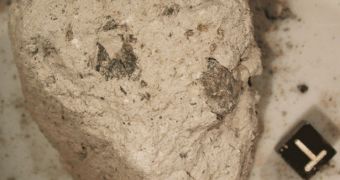Scientists have determined that most of the space impactors that struck Earth, the Moon, Mars, Mercury and Venus, during a time in our solar system's history known as the Late Heavy Bombardment (LHB), were asteroids.
The LHB was a tumultuous period that followed shortly after the emerging solar system's main period of accretion. It was characterized by numerous asteroids being diverted towards the Sun, and passing through the inner portions of the solar system as a result.
Many of these objects impacted the newly formed rocky worlds, as well as the Moon, producing a large number of craters. Most of these features can still be observed on Earth's natural satellite. This impact period occurred between 4.1 and 3.8 billion years ago.
The Sun itself is believed to have formed roughly 4.6 billion years ago, with Earth beginning to emerge from the star's protoplanetary disk some 100 million years later. It was around the same time that the other three rocky worlds were formed as well.
Past studies aimed at figuring out the type of impactors that slammed into these objects have yielded inconclusive results. Some suggested that most were asteroids or comets, while other proposed that mixtures of the two were responsible for reshaping the planets.
A small group of scientists believe that the LHB was caused by a protoplanet similar to the asteroid Vesta, which was destroyed before it fully formed, and whose debris wreaked havoc in the inner solar system. The new study demonstrates that indeed asteroids were the main culprits.
The investigation was conducted on a sample of rocks collected from the Moon back in 1972, by astronauts with the NASA Apollo 16 mission, Space reports. Lunar rocks are the main evidence supporting the entire LHB hypothesis.
“Our results provide evidence that asteroid collisions were responsible for delivering material to the moon at the end of the basin-forming epoch,” explains Katherine Joy, the lead author of the new research. She holds an appointment with the Houston, Texas-based Lunar and Planetary Institute.
“Further studies of lunar samples from other landing sites, and identification of further projectile types, will enable us to statistically assess the diversity of impacting bodies,” she and her team write in the May 17 issue of the top journal Science.

 14 DAY TRIAL //
14 DAY TRIAL //